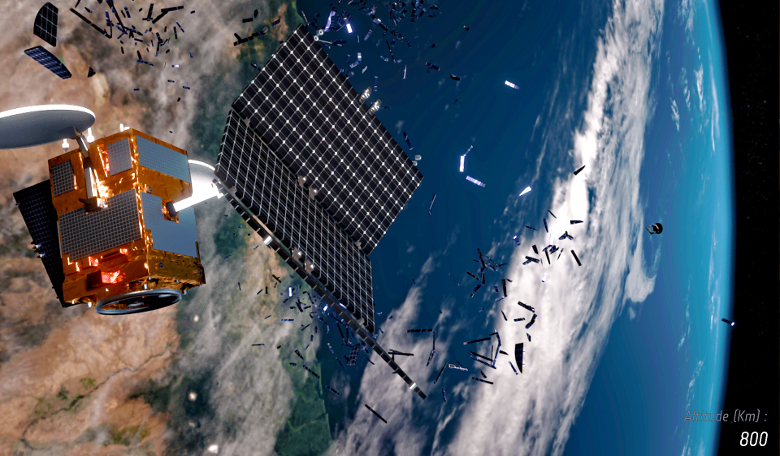With more than 750 000 pieces of dangerous debris now orbiting Earth, experts recently gathered at the 7th European Conference on Space Debris to discuss how to tackle the global issue of a burgeoning space-junk population.
The event which was heralded as the largest meeting yet, was held at ESA’s mission control centre in Darmstadt, Germany and was attended by over 350 participants ranging from academia, space organisations and industry.
Since the first rocket delivered a satellite into space in the 1950s, a subsequent 5250 plus space launches have contributed to an on-orbit population of more than 23 000 tracked debris objects. Less than a quarter of these objects are still functioning, while the rest are classified as space debris and no longer serve any useful purpose.
Worse still, these defunct and derelict craft have consequently led to approximately 290 explosions and breakups which in turn have generated a staggering 166 million pieces of debris larger than 1 mm left to cause potential chaos is space.
“In orbit, these objects have tremendous relative velocities, faster than a bullet, and can damage or destroy functioning space infrastructure, like economically vital telecom, weather, navigation, broadcast and climate-monitoring satellites,” said Holger Krag, Head of ESA’s Space Debris Office and conference chair.
And, with the rise of mega constellations containing thousands of satellites that will be deployed into a low orbit, this problem will only be exacerbated by an unsustainably large population of debris objects.
Around 40 percent of satellites are currently not properly disposed of at the end of their missions, therefore it is left to other means in which to ‘tidy-up’ this problem. The active removal or deorbiting of selected large defunct space objects was thus seen as key to reverse the debris increase.
“The technology required for deorbiting is actively being studied today and we saw a lot presented at this conference,” said Krag. Nonetheless, “we see evidence that fewer than half of the satellites that should be deorbited at end of life are actually commanded to do so, and there is no enforceable international regime to ensure this. It’s the classic ‘tragedy of the commons’, except it’s happening in space and could ruin modern technological society for everyone,” continued Krag.
With evidence to suggest that the environment in some orbital regions has already reached a critical state, the call for a coordinated international action came on the final day of the European Conference by its attendees. It was put forward that around 10 large defunct satellites must be removed from orbit each year, in order to combat the problem.
“The status quo is obviously no longer acceptable. We must now start removing dead satellites,” warned Krag.











